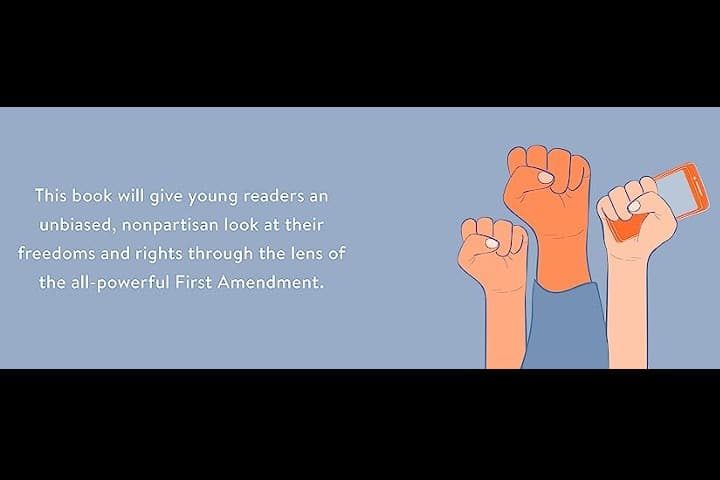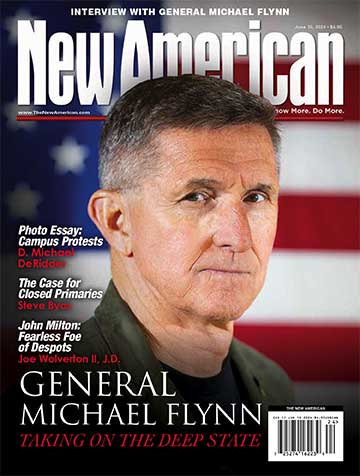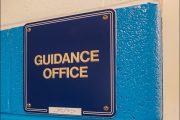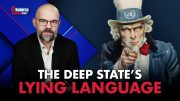
“If a nation expects to be ignorant & free, in a state of civilisation, it expects what never was and never will be.” — Thomas Jefferson to Charles Yancey, January 6, 1816
Every time I find out that there’s a book written to teach children about the Constitution, I anticipate an attempt to miseducate our most vulnerable population. Sadly, this is usually the case, and so it is in a new children’s guide to the Constitution called Your Freedom, Your Power: A Kid’s Guide to the First Amendment.
Because this book, written by Allison Matulli with Clelia Castro-Malaspina, is targeted to children in fifth to eighth grades, the errors it contains are magnified and the harm posed by those mistakes is significantly more menacing.
The press release sent out to reviewers and other readers sets out the purported purpose of the book, and its use of certain keywords set off my constitutional Spidey sense:
This book will give young readers an unbiased, nonpartisan look at their freedoms and rights through the lens of the all-powerful First Amendment.
There is no such thing as an “unbiased, nonpartisan” opinion about the meaning of the text of the First Amendment. Even among people claiming membership in the same political party or who occupy the same segment of the political spectrum, if you asked 1,000 of those people the meaning and purpose of the protections offered by the First Amendment, you’d get 1,000 different answers. “Unbiased, nonpartisan” is impossible, particularly when it comes to concepts the origin and application of which have not been taught correctly in nearly a century.
One recent review of the book, which is scheduled for release on July 25, telegraphed the tenor of the book and confirmed my suspicions of bias and partisanship:
Your Freedom, Your Power is written for middle school kids and serves as a primer on how the Constitution (and Bill of Rights) was composed and the structure of America’s legal system. It explains that there are exceptions to free speech “to protect people from really bad effects of certain kinds of speech,” including incitement to violence, malicious falsehoods and theft of “speech owned by other people” (e.g. copyrights). Your Freedom gets into contested areas of “expression,” including politically provocative clothing worn in schools (the courts have sent mixed signals).
The First Amendment was not enacted to protect people from “really bad effects” of speech certain people don’t like. In fact, it was enacted to prevent the federal government from restricting or abridging the right of the people to say whatever the people feel compelled to say, particularly when that speech is aimed at their political servants or those who promote the policies of those politicians. Additionally, speech, specifically the type of speech protected by the First Amendment, is designed to do damage — damage to a regime responsible for violating the Constitution and the rights of the people to limit the authority of those who would make laws for them. Consider this definition of the acceptable limits on the right of speaking freely, as written by Thomas Gordon and John Trenchard in 1720 in Cato’s Letter No. 15:
That men ought to speak well of their governors, is true, while their governors deserve to be well spoken of; but to do publick mischief, without hearing of it, is only the prerogative and felicity of tyranny: A free people will be shewing that they are so, by their freedom of speech.
The administration of government is nothing else, but the attendance of the trustees of the people upon the interest and affairs of the people. And as it is the part and business of the people, for whose sake alone all publick matters are, or ought to be, transacted, to see whether they be well or ill transacted; so it is the interest, and ought to be the ambition, of all honest magistrates, to have their deeds openly examined, and publickly scanned: Only the wicked governors of men dread what is said of them; Audivit Tiberius probra queis lacerabitur, atque perculsus est. The publick censure was true, else he had not felt it bitter.
In other words, it is the right and obligation of the people to speak “harmful” words to those in whom the people have placed their trust. If those people entrusted to make and execute the law fail to govern according to the best interest of the people, then they should expect the people to publicly call out the perfidy. If a politician doesn’t want to have his behavior talked about in public, then he’d better change his behavior, for any attempt to curtail the right of the people to censure their governors freely is an act of a “wicked governor.”
Now, regardless of the illusory and unsupportable claims of nonpartisanship and lack of bias, the very topics that the text of the book tries to convince children should be shielded from verbal assault immediately expose the partisanship and bias of the authors.
I suspect readers of The New American can accurately predict the protected policies. The publisher identifies those topics whose criticism should not be subject to the First Amendment’s protection: “walk-outs over gun violence … the U.S. government … failure to halt climate change,” “evolution in science courses, religious-related clothing, [and] the effect of school bathroom policies on transgender kids.”
The authors intend to teach your children — remember: this book is being used as a textbook at elementary and middle schools across the country — that speech opposing the teaching of evolution, the danger of climate change, the need to disarm civilians, the prohibition of public expressions of religious belief, or allowing “transgenders” to use the bathroom of the gender of their choice is not the type of speech that is protected by the First Amendment because such speech is “malicious” and “harmful.”
Next, parents with children in schools that could be using this book as a textbook need look no further than the table of contents to reject the writers’ claims of being unbiased and nonpartisan. Here are the names of the some of the chapters and subheadings:
“Limits on Religious Freedom: Prayer in the Classroom,” “Prayer at School-Sponsored Event,” “Monkey Laws and the Teaching of Evolution,” “Pledge of Allegiance ‘Under God,’” and “Mom, Take Down that Picture of Me.”
Finally, if you get past the table of contents and decide you’re going to give the book the benefit of the doubt without investigating whether it’s being used in your children’s schools, let’s look at Chapter 1: “The Constitution and The Bill of Rights,” specifically the subheading called “Creating a Country from Scratch: The Making of the Constitution.” Here are excerpts from that chapter:
[The Constitution] was created by some famous old white guys a long time ago.
It was time to create a centralized … government, a strong one. A government that would act as a parental figure.
The event was called the Constitutional Convention, and the delegates were among the who’s who from the upper crust of white, landowning men.
Last, but not least, here are the causes the book places in the “Kid Activist Hall of Fame”:
Dakota Access Pipeline Protest
Climate Change
Black Lives Matter
Your Freedom, Your Power: A Kid’s Guide to the First Amendment is scheduled to be available to school districts for classrooms and libraries on July 25 from Running Press Kids.




